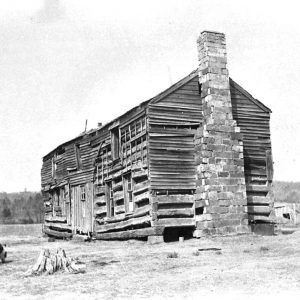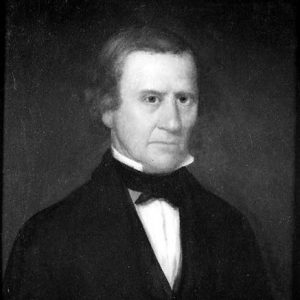calsfoundation@cals.org
Norristown (Pope County)
Norristown briefly served as the county seat of Pope County and was an important stop along the Arkansas River between Little Rock (Pulaski County) and Fort Smith (Sebastian County). It was located across the river from Dardanelle (Yell County) but no longer exists.
Norristown was first settled in the late 1820s by Samuel Norris and quickly became a main shipping point, with area cotton loaded up on boats for shipment downriver and eventually to New Orleans, Louisiana. Norristown was designated the county seat in the early 1830s, though no courthouse was ever built there, and served as such until the 1840 creation of Yell County from part of Pope County necessitated the movement of the seat to Dover (Pope County), a more central location. Aside from cotton farming, early efforts at coal mining in the area also spurred the growth of the town. Although it never incorporated, Norristown reportedly boasted a population of 300–400 at its height. Several sources hold that Norristown was almost voted the state capital of Arkansas, but there is no proof for these claims.
Presbyterian minister Cephas Washburn made Norristown one of the bases of his ministry in the 1840s and 1850s. He was one of the early ministers of a church founded there on April 9, 1843. His son, the painter Edward Payson Washbourne, painted his most famous work, The Arkansas Traveler, while in Norristown. The route of the Butterfield Overland Mail Company passed through Norristown in the late 1850s.
The Union’s capture of Dardanelle and other Arkansas River communities solidified Federal control of the area around Norristown for the remainder of the Civil War. However, two military engagements did occur at Norristown. On May 19, 1864, Brigadier General Joseph O. Shelby’s pickets were fired upon at Norristown by a Union party sent up from Lewisburg (Conway County), but they easily repulsed the attack. On September 6, 1864, Union troops under Colonel Abraham H. Ryan found a Confederate regiment on picket at Norristown and drove them away, capturing thirteen horses in the process.
A post office was established at Norristown in 1840 but closed in 1882. The construction of the Little Rock and Fort Smith Railroad through Russellville (Pope County) to the north drew away most residents. Part of the town caved into the Arkansas River, while the rest was converted into farmland. The Norristown Cemetery, which was utilized from 1852 to 1934, is listed on the National Register of Historic Places.
For additional information:
Gravely, Ernestine. “Early Twin Cities of Arkansas: Dardanelle and Norristown.” Arkansas Historical Quarterly 10 (Summer 1951): 177–181.
McDonald, Erwin. “Old Norristown.” Arkansas Gazette Magazine, July 16, 1933, p. 5.
Pope County Historical Association. History of Pope County, Arkansas. Winston-Salem, NC: Jostens Publishing Company, 1999.
Vance, David L. Early History of Pope County. Mabelvale, AR: Foreman-Payne Publishers, 1970.
Staff of the CALS Encyclopedia of Arkansas








Comments
No comments on this entry yet.